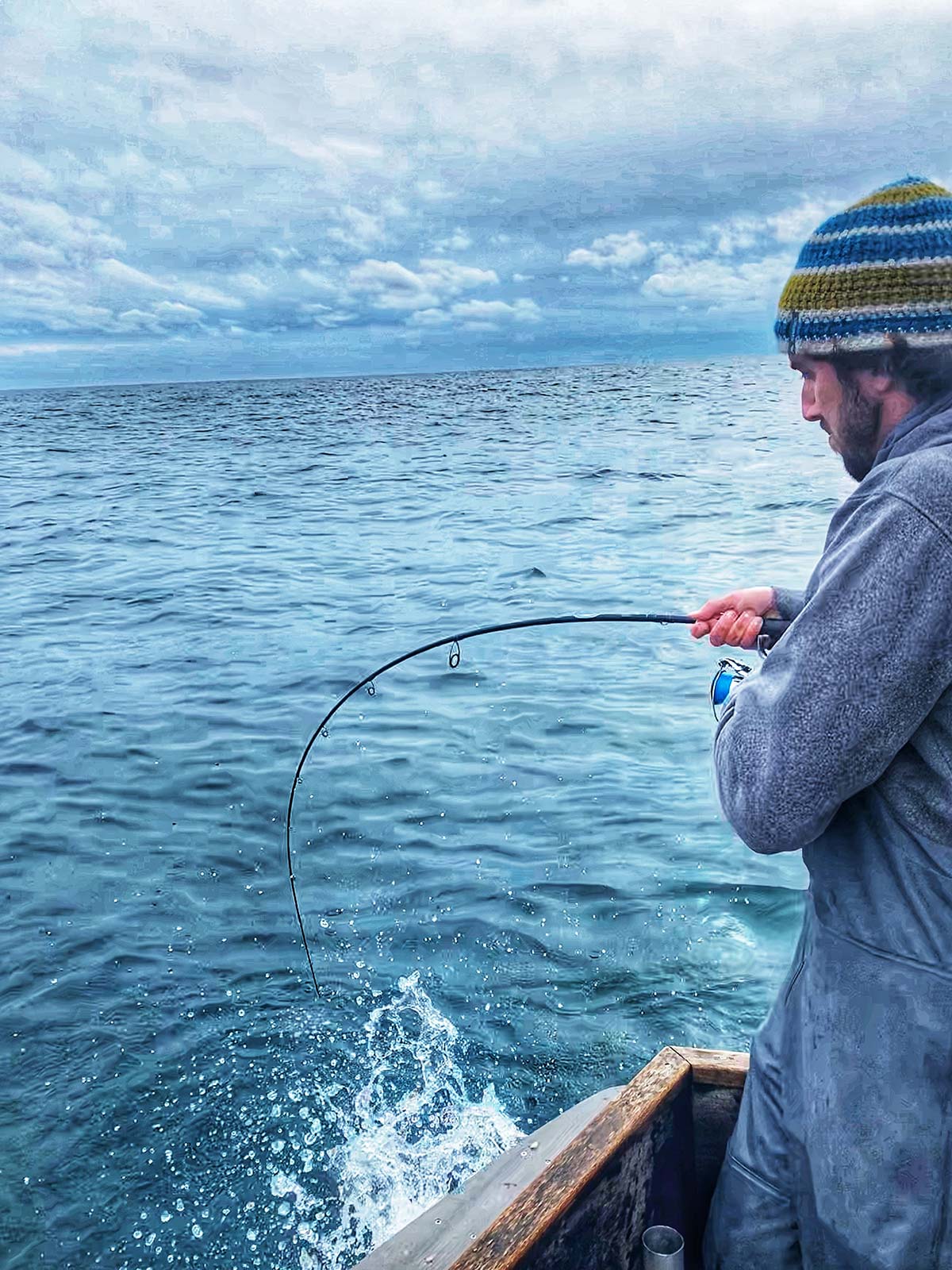
Find that one rod to cover multiple inshore situations.
Sometimes, it would make our fishing trips so much easier if we were able to fish one single rod the entire trip for a number of different species and be effective and successful in doing so. One stick could be too fast while another could be too short, or maybe one won’t have the backbone to handle that big striper, while you might want a different one to cast small epoxy jigs to falsies. It surely is tough to find a fishing rod to cover every fishing scenario, but over time, I’ve developed some favorites and found one that covers most fishing situations that I might run into this time of the year.
The rod itself that I would pick up first for most of my trips is my 7-footer medium action rated from 3/8 to 3/4 ounces with a fast action. I’ve literally done every sort of inshore fishing with this rod and have had success along with fun in doing so. I’m not saying the described ratings did everything perfectly either, but it always got the job done. This includes the extreme of fishing in depths of water of over 180 feet for late-season sea bass with 3-ounce diamond jigs and then using it just last week in only 8 feet of water with half-ounce blackfish jigs for a slammer day as well.
You might be questioning my use of a heavier jig with a rod only rated up to ¾-ounce, but remember that’s a casting rating and not a drop-down rating. I was using the rod to drop these heavier jigs straight to the bottom, and in reality, they aren’t even heavy in comparison to some other things used in close to 200 feet of water. The rod still handled the weight with no issue, although I wouldn’t go more than that.
Aside from jigging, the described actions cast a payload of up to one ounce great for inshore stripers and bluefish. I’ve used the setup to work Yo-Zuri Topknock Pencils, smaller Tsunami shads, NLBN shads, and even the smaller size Cotton Cordell Pencil Popper. Out front, during a diamond jig bite, this was the stick I grabbed to drop down hammered diamond jigs for stripers up to 40 pounds in the past. With a little bit of a fight, I was able to land and release the fish with no problem.
In a pinch, I’ve also tied on hi-lo rigs baited with clam for sea bass used to fish wrecks in around 80 feet of water. While this is not the setup I would typically use to do that kind of fishing, I was able to hold the bottom and grab a few keepers for the table by the end of the day.
| A FEW THAT FIT THE BILL |
|
Another thing you might be wondering is how in the world I am getting these weights down to the bottom in all these depth ranges? The key to that, and probably the key to allowing me to actually use this rod in all these different kinds of situations, is the braid I use. If it were to use a 30 or even 20-pound braid, I wouldn’t even be talking about this stuff because I wouldn’t be able to use these light weights in deep water. The use of either a 10 or 15-pound braid in combination with this rod lets these weights reach the bottom quicker and hold there better than some heavier conventional setups might hold. Don’t be afraid of the lighter lines. They’re actually stronger than you might think they would be. Remember, when you set your drag, put your line through the guides, and then pull, you’re only putting out a few pounds of drag pressure most times, which is well under the breaking strength of these lines. My only suggestion is to check the braid every once in a while for visible frays and nicks. If you do find yourself fishing some sticky stuff, just go longer and heavier on the leader. I’ll typically use 30 pounds, but I will bump that to 40 if I’m dealing with rocks or wrecks.
Experiment, fine-tune, and have fun with it. But be sure to work towards having that one rod that could do most of it because changing targets during a trip could mean the difference between a bust and banner, and having a stick that you could re-rig in a pinch to do so with will make you all the more versatile.



